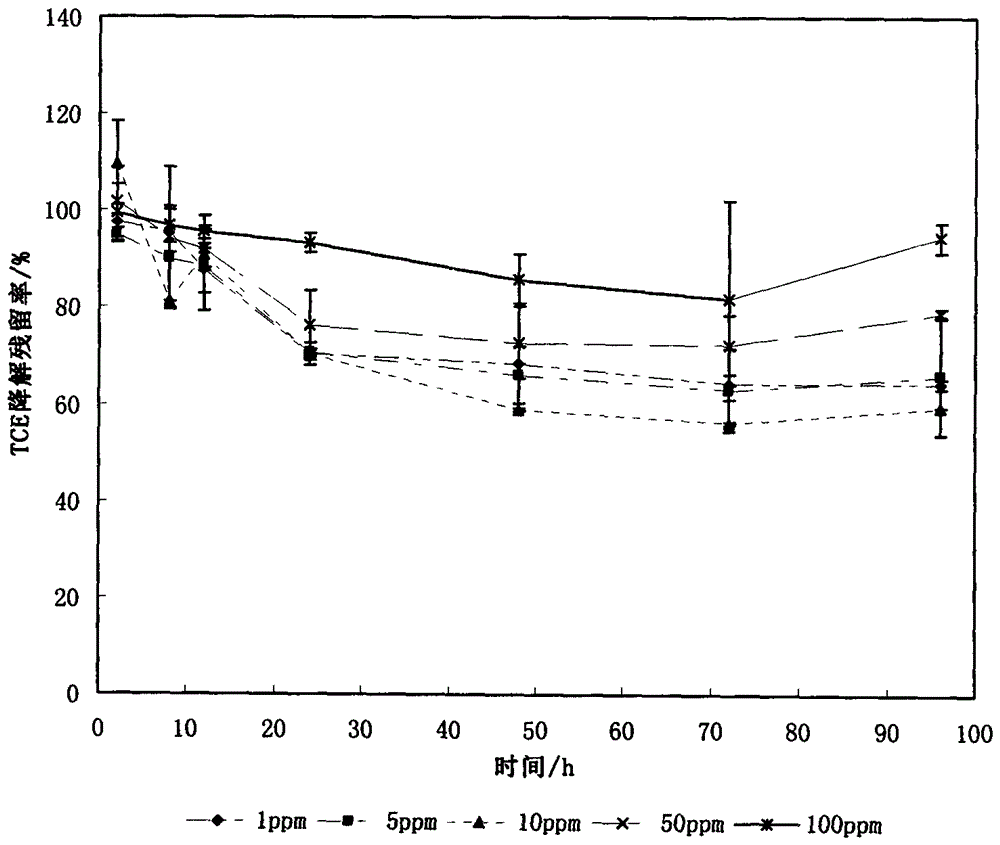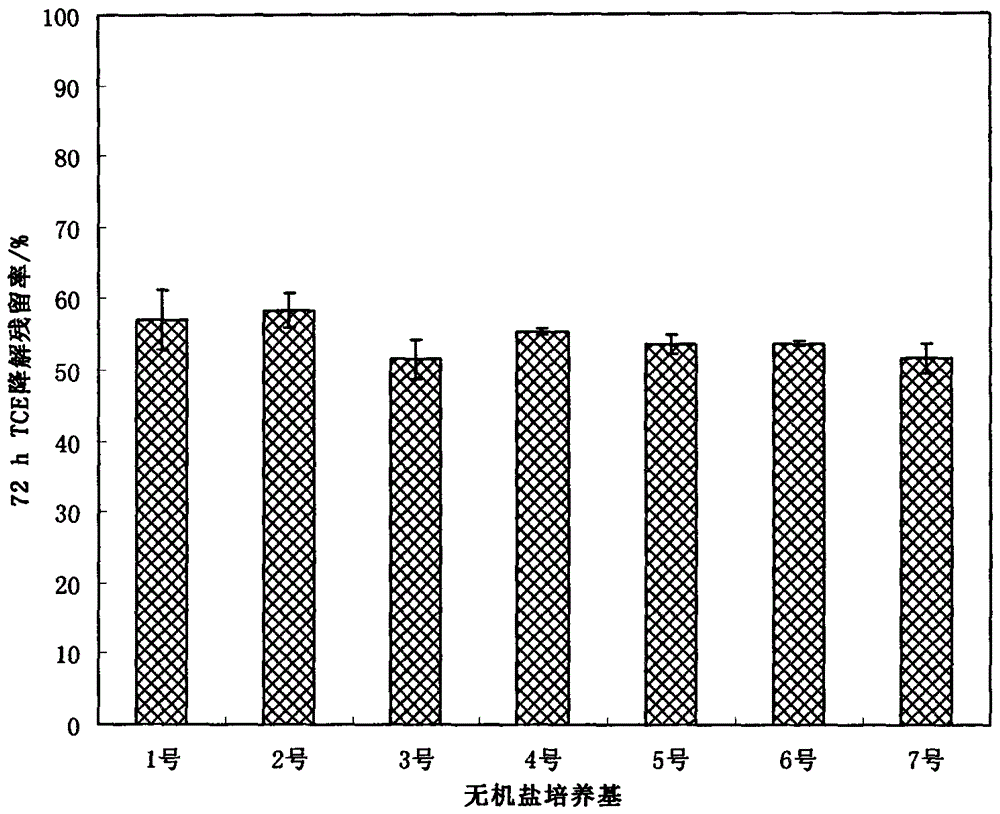A method for simultaneously controlling the combined pollution of gasoline and trichlorethylene in groundwater
A technology of trichlorethylene and complex pollution, applied in the restoration of polluted soil, chemical instruments and methods, biological water/sewage treatment, etc.
- Summary
- Abstract
- Description
- Claims
- Application Information
AI Technical Summary
Problems solved by technology
Method used
Image
Examples
Embodiment
[0011] Example: Ralstoniaeutropha study on optimal conditions for co-metabolism degradation of TCE
[0012] Benzene, toluene, phenol, 93 # Gasoline was used as a co-metabolized substrate, the concentration ratio of substrate to TCE was adjusted, different inorganic salt medium, pH value and salinity were optimized, and the residual rate of TCE degradation was determined.
[0013] Depend on figure 1 It can be seen that when the co-metabolized substrate is gasoline, the degradation effect of TCE is significantly better than when the co-metabolized substrate is benzene, toluene, and phenol, and the residual rate of TCE is the lowest.
[0014] When benzene, toluene, and phenol were used as co-metabolized substrates, the maximum degradation rate of TCE occurred at a substrate concentration of 500 mg / L; while gasoline was used as a co-metabolized substrate, the maximum degradation rate of TCE occurred at a substrate concentration of 10 mg / L. This is because, in the degradation p...
PUM
 Login to View More
Login to View More Abstract
Description
Claims
Application Information
 Login to View More
Login to View More - R&D Engineer
- R&D Manager
- IP Professional
- Industry Leading Data Capabilities
- Powerful AI technology
- Patent DNA Extraction
Browse by: Latest US Patents, China's latest patents, Technical Efficacy Thesaurus, Application Domain, Technology Topic, Popular Technical Reports.
© 2024 PatSnap. All rights reserved.Legal|Privacy policy|Modern Slavery Act Transparency Statement|Sitemap|About US| Contact US: help@patsnap.com










